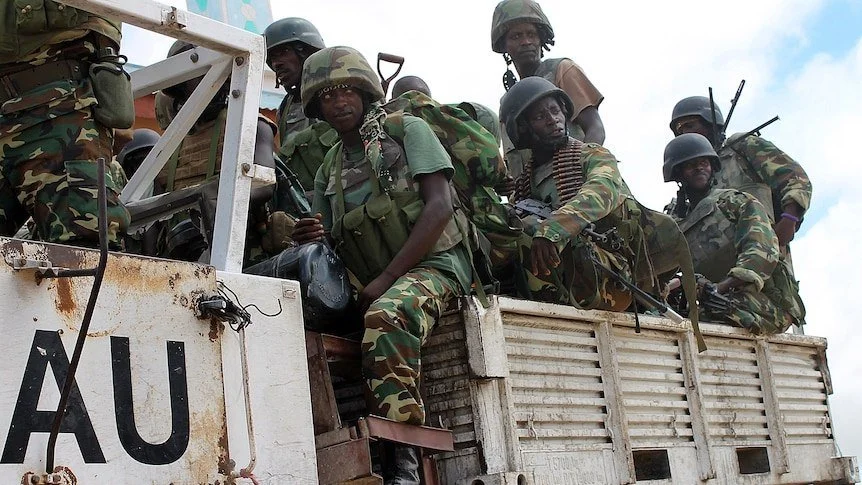Al-Shabaab’s Resurgence: Somalia’s Fragile Gains Unravel as Insurgency Rebounds Across the Horn of Africa
Executive Summary
Al-Shabaab is regaining territory and operational momentum across Somalia, reversing years of government and international progress. The group’s battlefield success, deepened finances, and exploitation of state fragility are reshaping the Horn of Africa’s threat landscape—with broader implications for regional and international stability.
Key Judgments
1. Al-Shabaab has recaptured or contested more territory in central and southern Somalia than at any time since 2018, with battles in strategic towns like Barire and Mahas reflecting a reversal of prior counterinsurgency gains.
Evidence: Reports confirm Al-Shabaab’s seizure of Barire and Mahas in July–August 2025, inflicting heavy casualties on Ugandan and Somali forces (Somaliguardian), with independent observers verifying vehicle losses and retreat of government forces. Ongoing military campaigns have yielded limited, temporary gains (ChimpReports).
2. Somalia’s political fragmentation, ineffective governance, and clan-based rivalries have undermined state legitimacy and provided Al-Shabaab new opportunities to embed itself locally, eroding public support for the government and security forces.
Evidence: Analysis from War on the Rocks and Critical Threats details the Somali government’s inability to hold retaken towns, failed clan reconciliation, and a “slide toward centralized authoritarian rule” under President Hassan Sheikh (WOTR). The Ma’awisley militia’s efforts have faltered as clan-based grievances erupt and Al-Shabaab exploits local power-sharing (Hiiraan).
3. Al-Shabaab’s transnational connections—with arms and financial flows from Yemen’s Houthi movement and increasing piracy in the Gulf of Aden—are expanding the group’s capabilities and regional threat profile.
Evidence: ACSS and UN reporting highlight up to $200 million in annual income, new maritime piracy, and documented Houthi-supplied drones and ballistic missiles since 2024 (ACSS; Critical Threats).
Analysis
Al-Shabaab’s operational resurgence in 2025 exposes the enduring fragility of Somalia’s security sector and the limitations of a decade-long, military-first international strategy. After losing swaths of territory to Somali government and AU forces from 2022–2023, Al-Shabaab adapted by deepening its local governance structures, exploiting clan disputes, and forging new power-sharing arrangements. The group has also softened its public posture, showing tactical leniency to some communities and embedding its justice and taxation mechanisms even where it does not maintain direct military control.
Government efforts to regain territory have proven ephemeral, with most offensives followed by quick Al-Shabaab counterattacks, as seen in Barire, Mahas, and Sabiid. The reliance on clan militias like the Ma’awisley, absent meaningful political reconciliation or government service provision, has led to a revolving-door dynamic: locals increasingly distrust both sides, and Al-Shabaab is able to return, often with a warmer welcome.
Externally, the group’s financial and operational resilience has been boosted by the reemergence of maritime piracy and cross-border support from Yemen’s Houthi movement, who supply drones, small arms, and reportedly even missile components. The collapse of state authority in large areas of Somalia has provided Al-Shabaab and the Islamic State in Somalia (ISS) the space to flourish, with the country now accounting for nearly one-third of all Africa’s extremist violence deaths, according to ACSS.
Meanwhile, the Somali state faces political gridlock and a shrinking coalition in Mogadishu. President Hassan Sheikh’s insistence on direct elections and efforts to centralize authority have alienated regional states, threatened to upend the federal system, and left the central government isolated and lacking legitimacy. The Somali National Army, heavily infiltrated by Al-Shabaab and dependent on foreign support, is demoralized and fractured—conditions ripe for further insurgent advances or even a collapse of state authority.
International donors and AU partners are scaling back support, citing funding gaps, mission fatigue, and doubts over the central government’s viability. This has left peacekeeping operations thinly stretched and unable to meaningfully challenge Al-Shabaab’s entrenchment. A sudden US or EU disengagement, openly discussed in policy circles, would likely accelerate government collapse, spark mass defections, and create space for a Taliban-style insurgent victory.
Absent a drastic shift toward genuine reconciliation, power-sharing, and locally grounded governance, no purely military approach will reverse the current trajectory. If political consensus is not rebuilt among Somalia’s regions, clans, and government, the country risks a renewed cycle of insurgency, fragmentation, and humanitarian crisis—with spillover effects across the Horn of Africa and beyond.
Sources
The East African: $8m bounty for Shabaab mastermind in Uganda, Kenya attacks
Somaliguardian: Al-Shabaab claims killing 20 Ugandan peacekeepers in clashes
Hiiraan Online: Somalia ranks second in Africa for extremist violence deaths, report shows
Hiiraan Online: Somali forces, Ma’awisley militia mobilize to retake Mahas from Al-Shabaab
ChimpReports: UPDF, Somali Forces Take Out 3 Senior Al-Shabaab Commanders in Major Offensive
SONNA: NISA, International Partners Neutralize Eight Al-Shabaab Militants in Targeted Operation
theSun: Peacekeepers clash with Al-Shabaab over strategic Somali town
War on the Rocks: Flailing State: The Resurgence of al-Shabaab in Somalia


